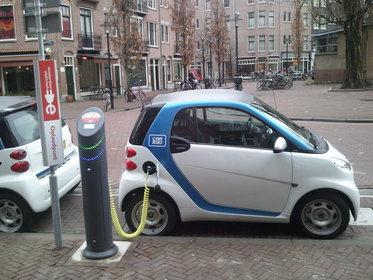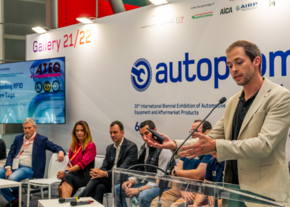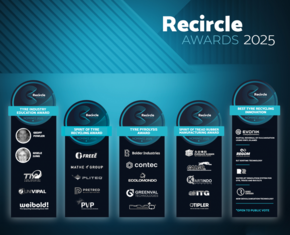
24/01/2017
Full electric vehicles, still too expensive
Dino Collazzo
Electricity represents mobility’s future, yet the expensive battery packs and the lack of a suitable recharging infrastructure is slowing down its diffusion. The 35% threshold of eco-friendly vehicles circulating worldwide will be reached no sooner than 2040. This is how Italy is moving compared to the rest of Europe.
Quiet, low energy consumption and zero emission thanks to their battery packs. The fact that electric vehicles represent a part of mobility’s future is now a certainty. What is rather difficult to predict, though, is when will this future be here. Some speculate that 2020 is the year in which “green cars” will be purchased more frequently than traditional vehicles, while others move that time limit to 2040 when, according to a number of researchers, 35% of the cars around the world will be moved by electrons. Actually, it still isn’t very clear how and when full electric vehicles will start eroding significant market shares from their internal combustion counterparts. Nevertheless, the climb, though slow, has definitely started, considering also the increasingly strict regulations on Co2 emissions in the atmosphere. In fact, reading the data contained in the latest report by OCSE’s International Energy Agency, 2015 recorded a 77,8% increase in the number of electric vehicles compared to the previous year – with the US, China, Japan, The Netherlands and Norway alone holding 70% of the market – with 1 million and 256 thousand vehicles. Furthermore, if alongside full electric vehicles we add hybrid and plug-in vehicles, then the number soars to nearly 2 million units. Three similar models distinguished only by their power unit: from fully electric in the first case to dual fuelled vehicles in the case of hybrid and plug-ins where both an internal combustion engine and an electric unit coexist.
And it is precisely on the production cost of the battery packs, mileage, recharging time and the availability of recharging stations that the decisive match on the development and diffusion of eco-friendly cars is being played. Manufacturers claim that the cost of the battery packs is still far too high, taking up a large part of the production costs of an electric vehicle. But according to a study by Bloomberg new energy finance (Bnef) and McKinsey & Co, in the future costs will progressively decrease, from 20 to 16% as the sales volumes of full electric cars continues to rise. A first encouraging sign comes from the reduced cost of accumulators which, based on an estimate by Bnef’s analysts, dropped by 65% compared to 2010. So much so that today, for each Kwh produced, only 350 euro are needed against the 1,000 six years ago. The automotive and aftermarket segments were the quickest in seizing the opportunities that these transformations are creating – it is quite reasonable to think that within the next few years the automobile will undergo more changes than it ever did during the last 30 years – but both will have to rethink their business models. In fact both vehicle manufacturers and OEMs will have to invest greater resources in research and technological development aimed at lowering production costs, increase vehicle efficiency and fine-tune the vehicle’s connected software and services. The aftermarket, on the other hand, especially independent operators, will need to update their garage equipment and working tools besides acquiring greater skills and professional training.
The situation in Italy and the rest of Europe.
Looking at the Italian market, the electric option is still lagging behind the standards found in other European countries where the demand grows faster than here. According to Unrae data, on the Italian market during 2016, out of 1 million 824 thousand new registrations only 2,2% (40.250) relate to electric or hybrid vehicles (1,5% in 2015). A closer look at those details reveal that only the latter have recorded a slight growth – gone from 26.240 in 2015 to 38.874 in 2016 – while the former recorded a 5,5% drop. In other words, according to an Anfia analysis, during 2016, out of 100 new registrations 10 relate to vehicles with alternative fuel (including LPG and CNG) while out of 10 thousand only 7,5 are fully electric. The slow growth must be ascribed to various factors, first of all the high vehicle prices – which in other countries are supported by meaningful tax benefits – as well as the lack of a suitable recharging infrastructure. Two elements that, coupled to consumer doubts on full electric technology, are acting as restrainers on the market. In fact, looking at the Italian reality it is quite evident that only companies and rental fleets are purchasing full electric vehicles. Fortunately, though, something seems to be moving on infrastructures and this thanks mainly to the DaFi European directive – recently received by the Government – on alternative fuels. In the words of the Minister of Infrastructure, Graziano Delrio, in the next three years we will witness a considerable growth in the distribution network of alternative fuels which will interest, besides LPG and CNG also new recharging stations. This, in theory, should act as a stimulus in low emission vehicles sales to the detriment of diesel and petrol powered cars.
In the Netherlands things are quite different and this detachment from internal combustion engines will be quicker. In fact, the Dutch Parliament is currently discussing a draft law that provides, starting in 2025, for a ban on the sale of vehicles with combustion engines on behalf of eco-friendly cars. Similar scenarios will soon be seen in other European States. For example in Germany, France and the U.K. government incentives on the purchase of eco-friendly vehicles have grown. While in Scandinavia, where electric vehicles are rather popular, the first experiments on electric roads are currently underway. On a freeway stretch between Sweden and Norway, heavy duty hybrid vehicles are being electrically powered much in the same fashion as trolleybuses.
And it is precisely on the production cost of the battery packs, mileage, recharging time and the availability of recharging stations that the decisive match on the development and diffusion of eco-friendly cars is being played. Manufacturers claim that the cost of the battery packs is still far too high, taking up a large part of the production costs of an electric vehicle. But according to a study by Bloomberg new energy finance (Bnef) and McKinsey & Co, in the future costs will progressively decrease, from 20 to 16% as the sales volumes of full electric cars continues to rise. A first encouraging sign comes from the reduced cost of accumulators which, based on an estimate by Bnef’s analysts, dropped by 65% compared to 2010. So much so that today, for each Kwh produced, only 350 euro are needed against the 1,000 six years ago. The automotive and aftermarket segments were the quickest in seizing the opportunities that these transformations are creating – it is quite reasonable to think that within the next few years the automobile will undergo more changes than it ever did during the last 30 years – but both will have to rethink their business models. In fact both vehicle manufacturers and OEMs will have to invest greater resources in research and technological development aimed at lowering production costs, increase vehicle efficiency and fine-tune the vehicle’s connected software and services. The aftermarket, on the other hand, especially independent operators, will need to update their garage equipment and working tools besides acquiring greater skills and professional training.
The situation in Italy and the rest of Europe.
Looking at the Italian market, the electric option is still lagging behind the standards found in other European countries where the demand grows faster than here. According to Unrae data, on the Italian market during 2016, out of 1 million 824 thousand new registrations only 2,2% (40.250) relate to electric or hybrid vehicles (1,5% in 2015). A closer look at those details reveal that only the latter have recorded a slight growth – gone from 26.240 in 2015 to 38.874 in 2016 – while the former recorded a 5,5% drop. In other words, according to an Anfia analysis, during 2016, out of 100 new registrations 10 relate to vehicles with alternative fuel (including LPG and CNG) while out of 10 thousand only 7,5 are fully electric. The slow growth must be ascribed to various factors, first of all the high vehicle prices – which in other countries are supported by meaningful tax benefits – as well as the lack of a suitable recharging infrastructure. Two elements that, coupled to consumer doubts on full electric technology, are acting as restrainers on the market. In fact, looking at the Italian reality it is quite evident that only companies and rental fleets are purchasing full electric vehicles. Fortunately, though, something seems to be moving on infrastructures and this thanks mainly to the DaFi European directive – recently received by the Government – on alternative fuels. In the words of the Minister of Infrastructure, Graziano Delrio, in the next three years we will witness a considerable growth in the distribution network of alternative fuels which will interest, besides LPG and CNG also new recharging stations. This, in theory, should act as a stimulus in low emission vehicles sales to the detriment of diesel and petrol powered cars.
In the Netherlands things are quite different and this detachment from internal combustion engines will be quicker. In fact, the Dutch Parliament is currently discussing a draft law that provides, starting in 2025, for a ban on the sale of vehicles with combustion engines on behalf of eco-friendly cars. Similar scenarios will soon be seen in other European States. For example in Germany, France and the U.K. government incentives on the purchase of eco-friendly vehicles have grown. While in Scandinavia, where electric vehicles are rather popular, the first experiments on electric roads are currently underway. On a freeway stretch between Sweden and Norway, heavy duty hybrid vehicles are being electrically powered much in the same fashion as trolleybuses.








